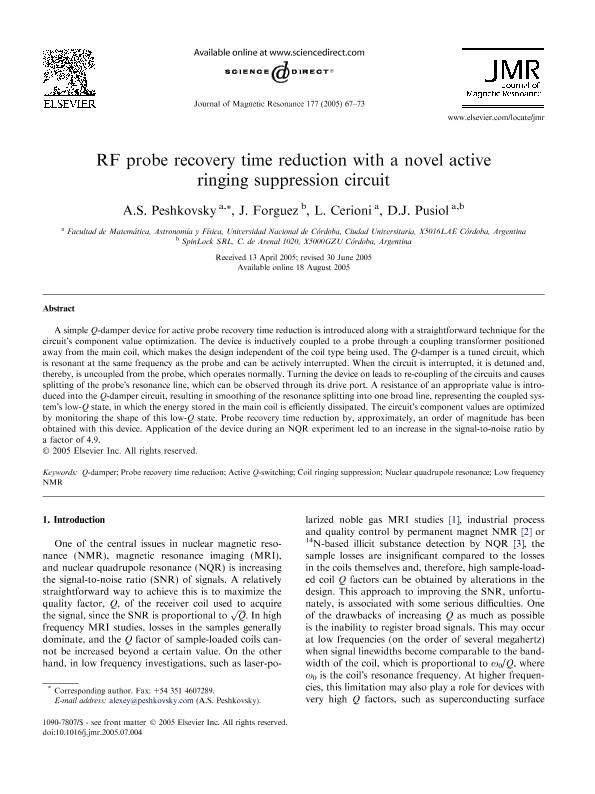Artículo
RF probe recovery time reduction with a novel active ringing suppression circuit
Fecha de publicación:
11/2005
Editorial:
Academic Press Inc Elsevier Science
Revista:
Journal Of Magnetic Resonance
ISSN:
1090-7807
Idioma:
Inglés
Tipo de recurso:
Artículo publicado
Clasificación temática:
Resumen
A simple Q-damper device for active probe recovery time reduction is introduced along with a straightforward technique for the circuit's component value optimization. The device is inductively coupled to a probe through a coupling transformer positioned away from the main coil, which makes the design independent of the coil type being used. The Q-damper is a tuned circuit, which is resonant at the same frequency as the probe and can be actively interrupted. When the circuit is interrupted, it is detuned and, thereby, is uncoupled from the probe, which operates normally. Turning the device on leads to re-coupling of the circuits and causes splitting of the probe's resonance line, which can be observed through its drive port. A resistance of an appropriate value is introduced into the Q-damper circuit, resulting in smoothing of the resonance splitting into one broad line, representing the coupled system's low-Q state, in which the energy stored in the main coil is efficiently dissipated. The circuit's component values are optimized by monitoring the shape of this low-Q state. Probe recovery time reduction by, approximately, an order of magnitude has been obtained with this device. Application of the device during an NQR experiment led to an increase in the signal-to-noise ratio by a factor of 4.9.
Archivos asociados
Licencia
Identificadores
Colecciones
Articulos(CCT - CORDOBA)
Articulos de CTRO.CIENTIFICO TECNOL.CONICET - CORDOBA
Articulos de CTRO.CIENTIFICO TECNOL.CONICET - CORDOBA
Citación
Peshkovsky, Alexey S.; Forguez, J.; Cerioni, Lucas Matias Ceferino; Pusiol, Daniel Jose; RF probe recovery time reduction with a novel active ringing suppression circuit; Academic Press Inc Elsevier Science; Journal Of Magnetic Resonance; 177; 1; 11-2005; 67-73
Compartir
Altmétricas




